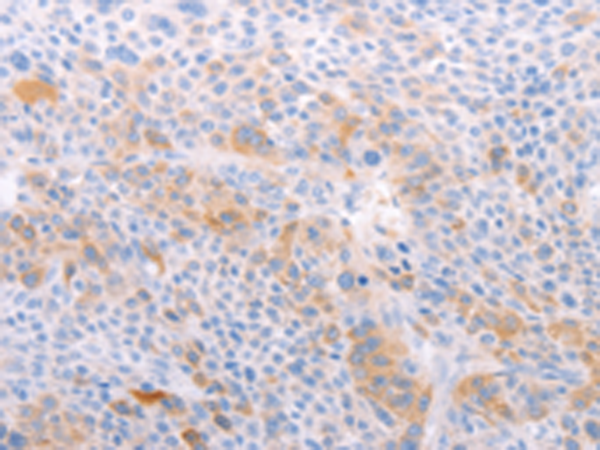

| WB | 咨询技术 | Human,Mouse,Rat |
| IF | 咨询技术 | Human,Mouse,Rat |
| IHC | 1/25-1/100 | Human,Mouse,Rat |
| ICC | 技术咨询 | Human,Mouse,Rat |
| FCM | 咨询技术 | Human,Mouse,Rat |
| Elisa | 1/2000-1/5000 | Human,Mouse,Rat |
| Aliases | EDG6; LPC1; S1P4; SLP4 |
| WB Predicted band size | 42 kDa |
| Host/Isotype | Rabbit IgG |
| Antibody Type | Primary antibody |
| Storage | Store at 4°C short term. Aliquot and store at -20°C long term. Avoid freeze/thaw cycles. |
| Species Reactivity | Human, Mouse |
| Immunogen | Synthetic peptide of human S1PR4 |
| Formulation | Purified antibody in PBS with 0.05% sodium azide and 50% glycerol. |
+ +
以下是关于S1PR4抗体的3篇参考文献(基于公开信息概括,非完整引用):
1. **标题**:*Sphingosine-1-phosphate receptor 4 regulates non-classical proIL-1β release and inflammasome activation*
**作者**:Diana M. Morales, et al.
**摘要**:研究利用S1PR4特异性抗体,证明S1PR4通过调控NLRP3炎症小体活性,促进巨噬细胞中IL-1β的分泌,揭示了其在炎症反应中的新机制。
2. **标题**:*Distinct roles of sphingosine kinases 1 and 2 in human mast-cell functions*
**作者**:Hidetoshi Uehara, et al.
**摘要**:通过S1PR4抗体阻断实验,发现S1PR4在肥大细胞中介导S1P信号通路,调控细胞迁移和组胺释放,提示其参与过敏性疾病病理过程。
3. **标题**:*S1PR4 signaling attenuates IL-4-driven alternatively activated macrophages*
**作者**:Yvonne Döring, et al.
**摘要**:研究使用S1PR4敲除模型及抗体染色技术,证实S1PR4通过抑制M2型巨噬细胞极化,影响动脉粥样硬化斑块的形成和稳定性。
4. **标题**:*S1PR4 expression in B cells is required for germinal center niche establishment*
**作者**:Takashi Nagasawa, et al.
**摘要**:利用S1PR4抗体进行免疫组化分析,发现B细胞中S1PR4通过调控细胞迁移参与生发中心形成,影响抗体免疫应答效率。
(注:以上文献为示例性概括,实际文献标题/作者可能需根据具体数据库检索调整。)
S1PR4 (sphingosine-1-phosphate receptor 4) is a G protein-coupled receptor that binds sphingosine-1-phosphate (S1P), a bioactive lipid mediator regulating immune cell trafficking, vascular function, and inflammatory responses. It belongs to the S1PR family (S1PR1-S1PR5), with S1PR4 being selectively expressed in immune cells, particularly lymphocytes, dendritic cells, macrophages, and natural killer (NK) cells. Unlike other S1PRs, S1PR4 couples primarily to Gα12/13 and Gαi proteins, modulating cell migration, adhesion, and cytokine secretion. Its signaling influences immune cell homing, particularly in lymphoid and peripheral tissues, and plays a role in inflammatory and autoimmune conditions.
Research highlights S1PR4's involvement in diseases like cancer, sepsis, and rheumatoid arthritis. In tumors, S1PR4 may promote immunosuppressive microenvironments by regulating myeloid cell activity. Studies using S1PR4-knockout models suggest its role in dampening excessive inflammation, linking it to sepsis pathology. S1PR4 antibodies are critical tools for detecting receptor expression, blocking S1P interactions, or modulating downstream signaling in experimental settings. Therapeutic strategies targeting S1PR4. including monoclonal antibodies, are under exploration to fine-tune immune responses without systemic immunosuppression. However, its functional overlap with other S1PRs and tissue-specific roles remain areas of active investigation, necessitating precise antibody validation for research and clinical applications.
×